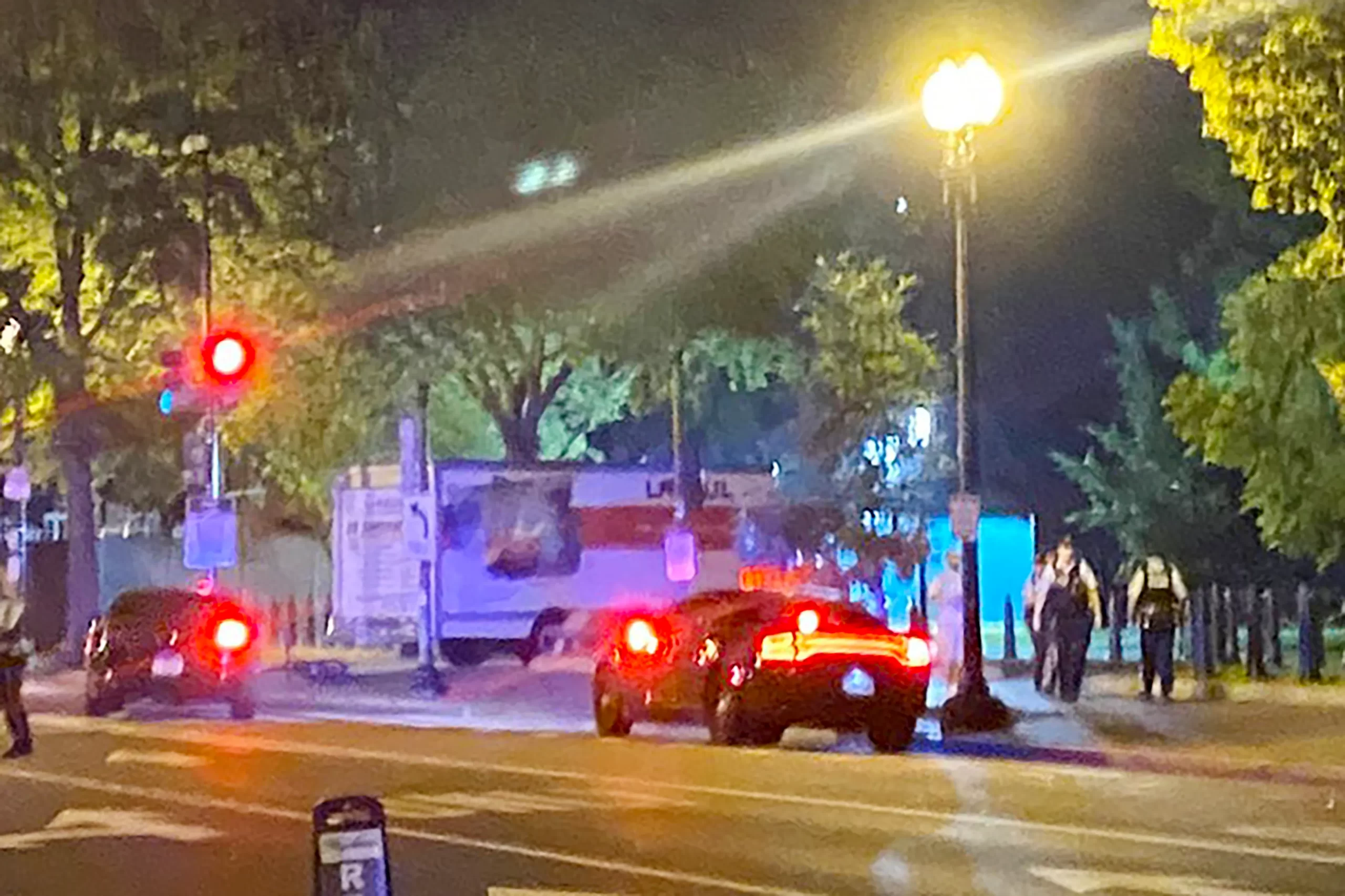
The White House, an iconic symbol of American democracy, stands as both the primary residence and official office of the President of the United States. Encircled by heavy security and stringent protocols, it epitomizes both the physical and ideological stronghold of the U.S. government.
However, even this fortified landmark isn’t immune to breaches, as evidenced by the shocking incident in which a vehicle crashed into the White House gate. This event was not just an isolated accident but also a significant occurrence that warrants a comprehensive investigation into security protocols, the potential motivations behind the act, and the broader implications for national security. This article explores the incident, analyzing its impact while providing insights into future security measures.

Background and Initial Response by the White house
The White House Complex: An Overview
The White House covers 18 acres, including the Executive Residence, the West Wing, and numerous administrative buildings. It is strategically located at 1600 Pennsylvania Avenue in Washington, D.C., along with other significant landmarks in the U.S., including the National Mall and Capitol Hill. Constructed over two centuries ago as simple wooden fences, the building’s historic fences have been modified and reinforced to prevent unauthorized access. Regardless of the physical barriers and extensive surveillance network, several security breaches have been recorded at the site.
The Incident Unfolds
From the above, the event in which a vehicle crashed into the gate of the line togel White House was immediate and unexpected. The first reports indicate that the driver drove through several streets before accelerating towards the White House’s gate . The driver hit the gate at a high speed before a strike, leaving damage at the scene, and security was forced to ensure an immediate lockdown.
Swift Emergency Response
Upon the vehicle crashing into the gate, the Secret Service immediately implemented emergency protocols and secured the entire complex. The driver was captured, and several personnel made sure the President and relevant staff were safely hidden in the living quarters. Officers and emergency responders evacuated all non-essential complex members while closely examining the crash site for potential threats such as explosives. Simultaneously, the news of the incident was out globally within minutes.
White House Security Protocols and Defenses
Layers of Protection
Being the nation’s beacon, the White House has a multi-layered security apparatus; this consists of: i) fencing and barriers, ii) surveillance technology, and iii) human security personnel. The physical barriers around the White House are perimeter fencing, reinforced with bollards to make entry impossible. Video surveillance footage is monitored in the real-time with high-definition cameras, infrared sensors, and motion detectors. Security personnel, the Secret Service agency, is supported by the U.S. Park Police, which maintains a 24-hour surveillance system and can detect abnormal activities .
Reviewing the Response
While the prompt action of the Secret Service minimized potential risks, the incident also shed light on existing vulnerabilities. Security analysts scrutinized the effectiveness of barriers and surveillance equipment, urging a comprehensive review to identify weak points that allowed the vehicle to reach the gate.
Evolving Security Threats
The ever-changing nature of threats, from lone individuals with unclear motives to organized terror cells, presents significant challenges. The Secret Service must constantly adapt its strategies to address new attack vectors and technologies used by malicious actors.

Understanding Potential Motives Behind the Incident in white house
Mental Health Factors
A recurring pattern in similar incidents involves individuals experiencing psychological crises. Their behavior may become unpredictable and impulsive, often manifesting as drastic actions directed toward prominent symbols like the White House. Identifying and addressing mental health issues within society could be critical in preventing similar occurrences.
Political Agendas and Extremism
Some individuals act out of deeply held political convictions or extremist beliefs, perceiving the White House as a symbol of perceived oppression or authoritarianism. By attacking the gate, they might believe they can draw attention to their cause or disrupt government operations.
Personal Opportunism and Sensationalism
Others may be driven by personal reasons, hoping to exploit the incident to gain notoriety or publicity. Their actions may not align with any coherent ideology but are instead motivated by a desire to be noticed.
Broader Implications of the White house Incident
Public Perception and Concerns
The incident stirred public concerns, with many questioning how a vehicle could breach one of the most secure landmarks in the world. Conversations emerged around whether security protocols at other federal buildings are adequate or require reinforcement.
Impact on National Security
Although the situation was controlled swiftly, it exposed vulnerabilities that could have been exploited by more organized adversaries. Some security analysts argue that these breaches might inspire copycat attempts, making it imperative for the government to reassess and strengthen protocols.
Political Ramifications and Policy Responses
Politicians and policymakers were quick to use the incident to advance their viewpoints. Some criticized the administration for not prioritizing security upgrades, while others argued for increased funding and stricter security protocols at sensitive locations nationwide. As a result, congressional committees may call for hearings to examine the gaps in current security measures.
Strategies to Enhance Future Security Measures
Technological Advancements
Integrating emerging technologies can bolster existing defenses. Innovations like:
- Automated License Plate Readers: These could instantly identify suspicious vehicles approaching sensitive areas.
- Facial Recognition Systems: Such systems could identify potential threats even before they approach the White House perimeter.
- AI-Powered Surveillance: Artificial intelligence can analyze surveillance data, helping security personnel prioritize real threats.
Reinforced Physical Barriers in white house
Reinforcing physical barriers remains crucial. Installing higher fencing, retractable bollards, and anti-ram devices would significantly deter intruders. While not foolproof, these measures can buy critical time for security personnel to respond.
Comprehensive Training and Intelligence Sharing
Even the most sophisticated technology requires skilled personnel to interpret the data. Increasing interagency cooperation, sharing intelligence, and conducting rigorous training exercises are all crucial for detecting threats early.
Community Engagement and Awareness
Educating the public and encouraging vigilance are equally important. A well-informed citizenry can play a vital role in reporting suspicious behavior, helping authorities act before a situation escalates.

Learning from Past Breaches in white house
Previous Incidents at the White House
This wasn’t the first time the White House faced security challenges:
- 2014 Fence-Jumping Incident: An intruder managed to jump the fence and make it to the East Room before being subdued.
- 1994 Cessna Plane Crash: A man stole a Cessna plane and crashed it into the South Lawn.
- 1950 Truman Assassination Attempt: Two Puerto Rican nationalists tried to storm Blair House, where President Truman was residing.
Lessons to Apply from the white house incident
Each of these incidents exposed specific vulnerabilities, leading to enhanced fencing, better surveillance, and improved emergency protocols. Similarly, this latest breach will prompt further security enhancements.
Conclusion
The incidence of a vehicle crashing into the White House gate is a chilling reminder that some of the most fortified landmarks can be infiltrated by determined individuals. Although the Secret Service response to the incident was swift and no physical altercations ensued, the threat exposed the vulnerability of such facilities to outsiders and the need for close readiness. As the country seeks to adapt and counter more complex threats, security agencies must continue to redesign their strategies, utilizing technology, fortifying physical barriers, and enhancing cooperation.
It is also important to have an understanding of the possible motivations that drove this intrusion in the design and deployment of preventive measures. In the end, ensuring the House remains safe will involve maintaining a balance between accessibility and the ability to defend it against any danger. If you enjoyed this article, please consider reading our comprehensive analysis of eSports for further insights.








